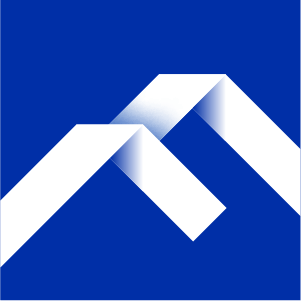The Lone Warrior's Battle for Compliance: How Did Circle's CEO Break Through the Tether Siege and the Interest Rate Winter?
Original author: Olga Kharif
Original translation by: Saoirse, Foresight News
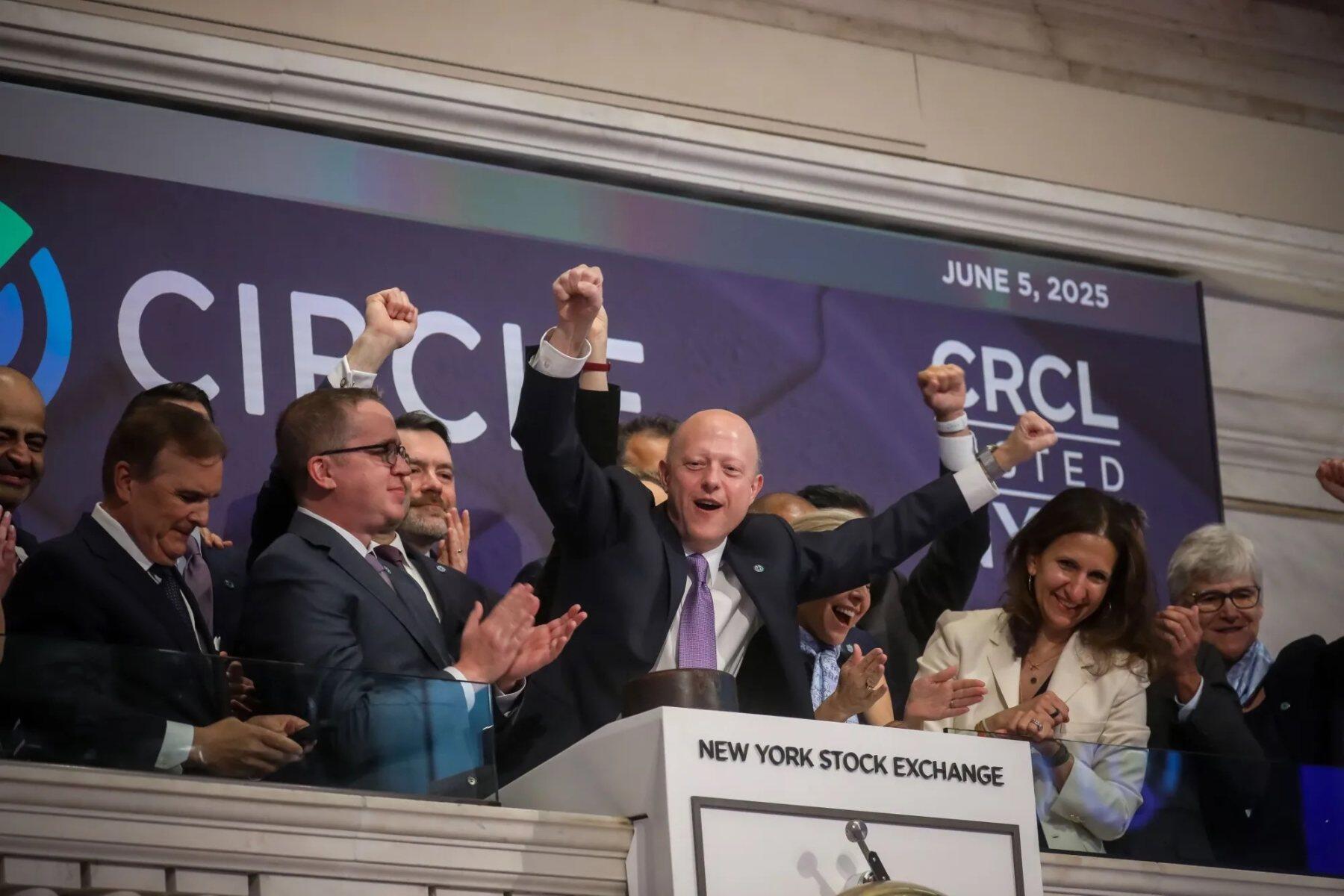
On June 5, Circle CEO Jeremy Allaire (center) attends the company's IPO ceremony at the New York Stock Exchange. Photographer: Michael Nagle / Bloomberg
Key points:
- Despite Circle being one of the most established companies in the stablecoin space, and its CEO Jeremy Allaire already being a billionaire, he still has an unfinished road to prove himself.
- Circle is facing multiple challenges: intense market competition, its core revenue streams are at risk due to falling interest rates, and its main competitor, Tether, is returning to the U.S. market.
- Allaire firmly believes that his strategy and Circle will ultimately prevail, and the company's earnings report on Wednesday will be a new opportunity for him to prove the effectiveness of his strategy.
Jeremy Allaire still has an unfinished path to prove himself.
As CEO of Circle Internet Group, he leads one of the leading companies in the latest wave of the cryptocurrency industry—the stablecoin sector. His business model, which he has championed for years, has been formally incorporated into the legal framework through a bill signed by President Trump. And thanks to Circle's IPO in June of this year (which also ignited a wave of cryptocurrency IPOs in 2025), Allaire is now a billionaire.
However, the 54-year-old CEO is still struggling to gain widespread recognition within the industry, and Circle is facing multiple challenges. The company operates in an exceptionally competitive market, and its core revenue streams are at risk of shrinking due to declining interest rates. Meanwhile, its main competitor—Tether, whose profitability and valuation far exceed Circle's—is returning to the US market, undoubtedly a dangerous sign for Circle's home turf.
Traditional bankers viewed Allaire as a threat, fearing that stablecoins would siphon bank deposits away; his peers in the cryptocurrency space also kept their distance. At industry conferences filled with hoodies, he was always the "outlier" in a suit. More importantly, he not only insisted on compliant operations but also actively pushed for legislation to establish industry rules.
In an industry that prides itself on anonymity, unique personality, and disrupting the traditional financial system, such ideas clearly cannot win Allaire the "popularity contest."
"Jeremy Allaire's strategic path has always run counter to the Bitcoin ecosystem," said Cory Klippsten, head of the Bitcoin investment platform Swan Bitcoin. "Bitcoin's goal is to separate currency from the state, while his work focuses on integrating cryptography into the existing fiat currency system."
Despite persistent skepticism, Allaire remains convinced that his strategy and Circle will ultimately prevail. The company's earnings report on Wednesday will provide him with a new opportunity to prove the effectiveness of his strategy.
"To persevere, you must have a strong belief in the importance of what you're doing and a deep moral foundation," Allaire said in an interview. "You'll encounter setbacks, and everyone will tell you 'you're wrong,' 'you'll fail.' But for me, this is not just a business plan—I do this because I firmly believe it can truly improve the world."
Allaire's career at Circle, a company founded in 2013, was fraught with ups and downs.
Circle initially started as a payment platform based on the Bitcoin network. It subsequently adjusted its strategy multiple times, nearly went bankrupt, and faced financial difficulties due to the collapse of Silicon Valley Bank. To maintain the operational structure of its core stablecoin USDC, Allaire ultimately had to sell assets and lay off hundreds of employees to stay afloat.
"During Circle's crisis, nobody believed I could pull through," Allaire recalled, "but I still gave it my all."
Performance growth challenges
Today, Allaire's challenge has shifted from "survival" to "proving the ability to grow".
Stablecoin issuers like Circle primarily generate revenue by investing their reserves in short-term cash-like assets such as U.S. Treasury bonds. As interest rates decline, even if Circle's revenue increases, its return on investment per unit will almost inevitably decrease.
Furthermore, Allaire's revenue-sharing agreement with Coinbase Global Inc. has significantly squeezed Circle's profit margins. In the second quarter of 2025, distribution fees payable to Coinbase were more than three times Circle's adjusted profit of $126 million. In contrast, Tether, which is not subject to the same rules and auditing requirements, reported a profit of $4.9 billion for the same period.
Top 5 stablecoins by market capitalization
Unit: billion US dollars
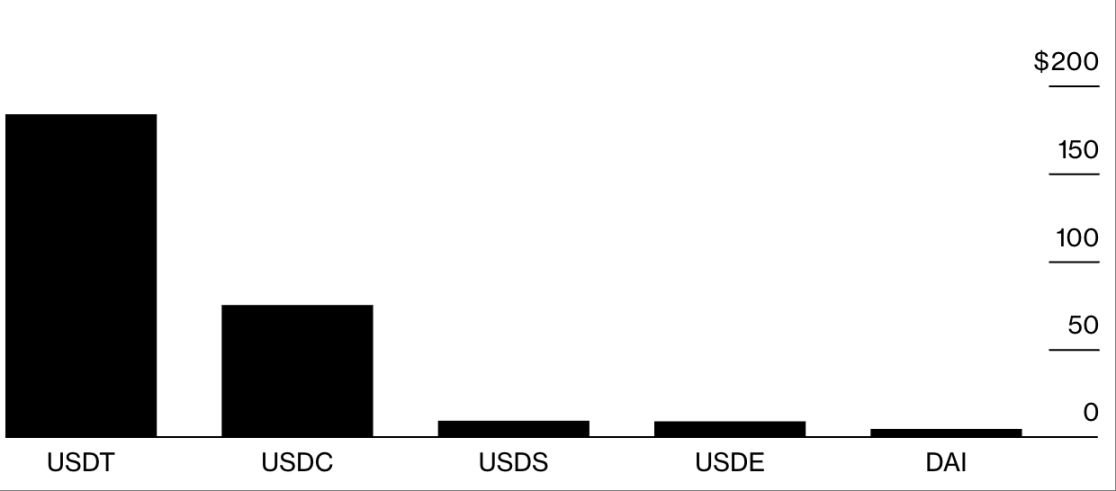
Data source: CoinGecko
Tether's USDT was launched several years earlier than Circle's USDC, and its scale is far larger—USDT has a market capitalization of $183 billion, while USDC is only $76 billion—making it more profitable. Furthermore, Tether has ties to Cantor Fitzgerald, where former U.S. Commerce Secretary Howard Lutnick previously worked.
Another new entrant in the stablecoin market, World Liberty Financial Inc., has ties to the Trump family. With the surge in stablecoin usage, hundreds of companies, including Tether and World Liberty, are vying for Circle's market share. Allaire admitted in a recent earnings call that this is a "winner-takes-all market."
Allaire is currently attempting to develop new revenue streams for Circle through other businesses, but Wall Street analysts are generally skeptical of the effectiveness of this move. His recent attempts include launching blockchain, a payment network, and a tokenized money market fund.
Despite this, Mizuho Securities analyst Dan Dolev bluntly stated, "USDC is just another stablecoin, nothing special. Circle's stock is overvalued, it's that simple." Among analysts covering Circle, 4 gave a "sell" rating, 11 gave a "buy" rating, and 10 gave a "hold" rating.
Circle's current stock price is around $104, significantly higher than its IPO price of $31, but less than half of its post-IPO peak. Its market capitalization of $24 billion pales in comparison to the $500 billion valuation implied by Tether's current fundraising activities.
Tech entrepreneur
Although Allaire had previously led two companies to IPOs—software company Allaire Corp. and video platform Brightcove Inc.—Circle will almost certainly be a core legacy of his career.
Allaire's interest in technology began in his childhood: when he was 11, his family moved to Winona, a small town in Minnesota. He and his younger brother JJ were considered "a bit nerdy" by others—they would take machine language printouts and type them word by word into the computer to write games. "If you mistyped even one letter, the program wouldn't run, so you had to be extremely focused," he recalled.
As an adult, Allaire fully dedicated himself to the internet industry. He even assisted political activist Noam Chomsky in digitizing his works. Subsequently, he founded several startups. Shortly after leaving Brightcove, he co-founded Circle with his friend Sean Neville.
"I used to spend a lot of time at his house," Neville recalled. "Our ultimate goal was to create a completely new financial system."
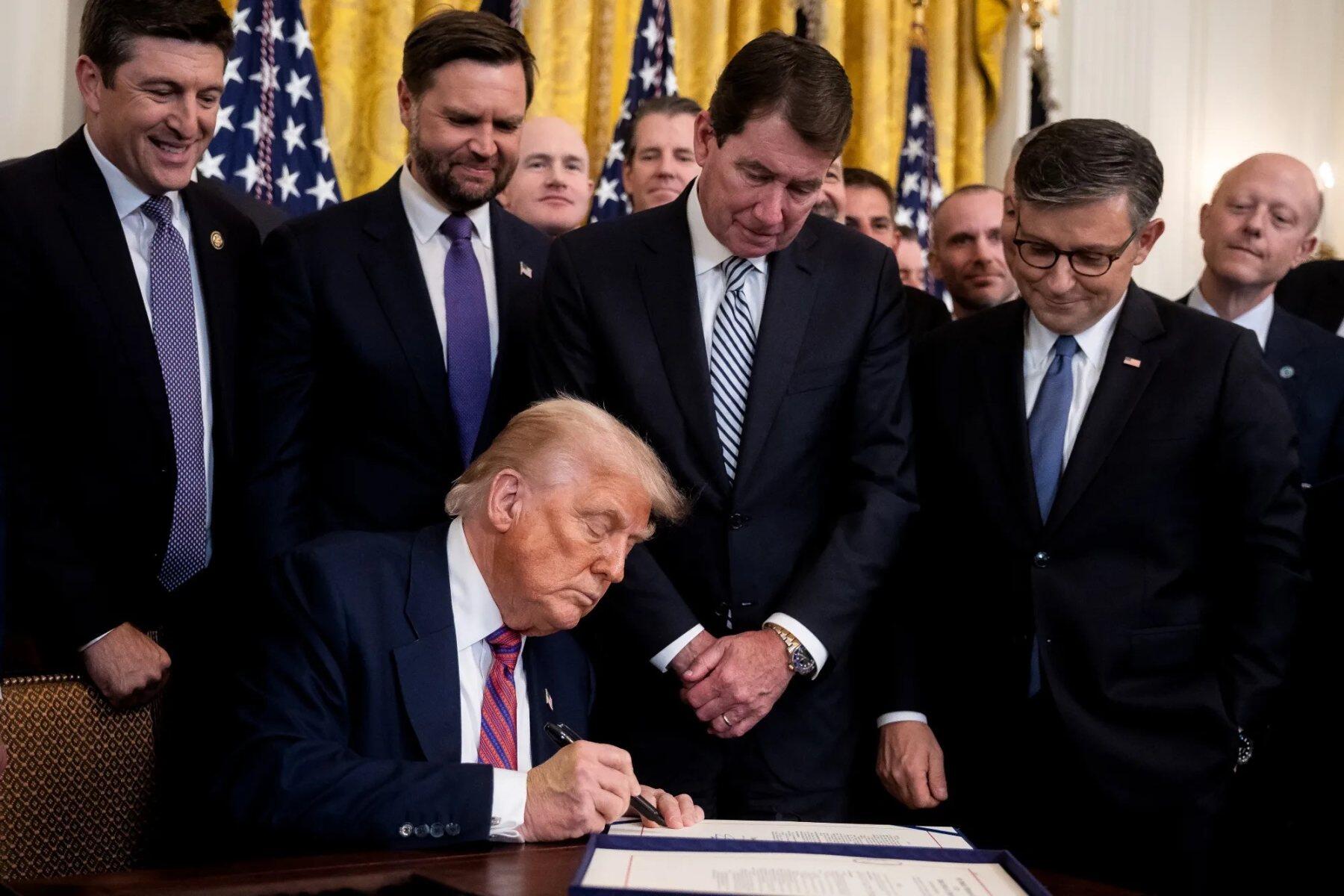
On July 18, 2025, U.S. President Trump held a signing ceremony for the GENIUS Act at the White House. Circle CEO Jeremy Allaire (top right) attended the ceremony. Photographer: Francis Chung / Politico / Bloomberg
According to the Bloomberg Billionaires Index, Allaire's current personal wealth is $2.1 billion, primarily from his holdings in Circle. While this figure is far lower than Tether CEO Paolo Ardoino's $5.6 billion, it is comparable to that of prominent American business figures such as Apple CEO Tim Cook and BlackRock CEO Larry Fink.
Allaire stated that he grew up in a family with "progressive values"—both his parents were involved in social services and activism—but he spoke highly of his experience attending the signing ceremony of the GENIUS Act at the White House and shaking hands with Trump. This act established a federal regulatory framework for stablecoins.
"I feel incredibly honored and excited to have been a part of this," Allaire said. "The writing of the bill, its enactment, and my ability to play a significant role in the process—this is one of the most meaningful moments of my life."
Public records show that Allaire has long been a primary supporter of the Democratic Party, but Circle donated $1 million to Trump’s inauguration committee.
Fitness Lifestyle
A few years ago, Allaire started a fitness program: he gave up alcohol, began to focus on a healthy diet, and according to health app data, he now sleeps an average of 7 hours a night.
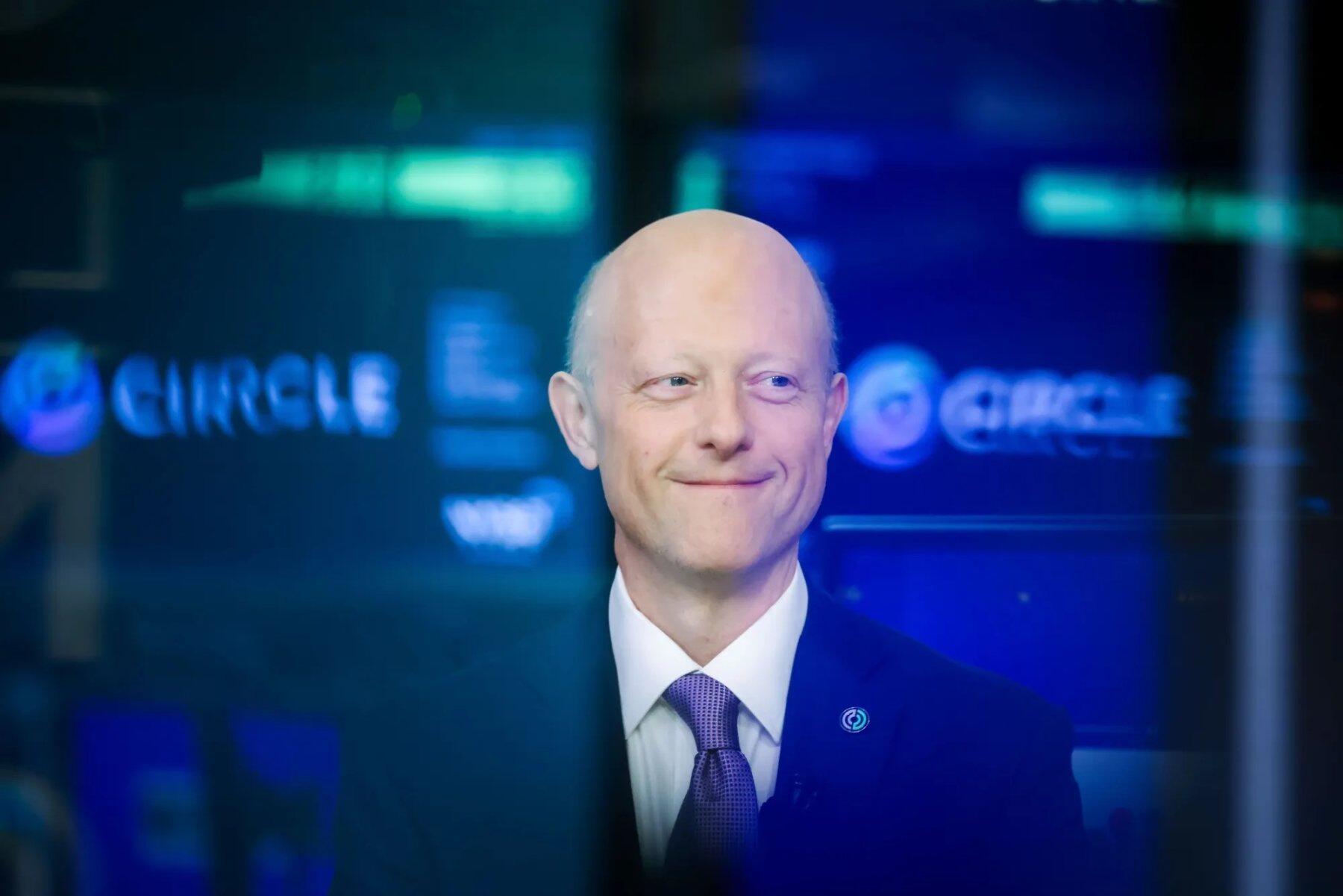
On June 5, Jeremy Allaire attended Circle's IPO ceremony at the New York Stock Exchange. Photographer: Michael Nagle / Bloomberg
Current and former employees alike describe Allaire as a "gentle but strict" boss—he doesn't yell or slam his fist on the table, and he doesn't work late into the night, but he's almost always quick to reply to messages. Some recall holding strategic meetings with him while walking in the woods.
Now, Allaire is planning her next move.
"Building a monetary layer on the internet was the goal of phase 1.0," Allaire said. "We have achieved that step and are now moving forward with planning for phases 2.0 and 3.0."
- 核心观点:Circle CEO面临增长与盈利双重挑战。
- 关键要素:
- 利率下降威胁核心收入来源。
- 主要对手Tether强势回归美国市场。
- 利润受Coinbase分成协议严重挤压。
- 市场影响:加剧稳定币市场竞争格局。
- 时效性标注:中期影响


